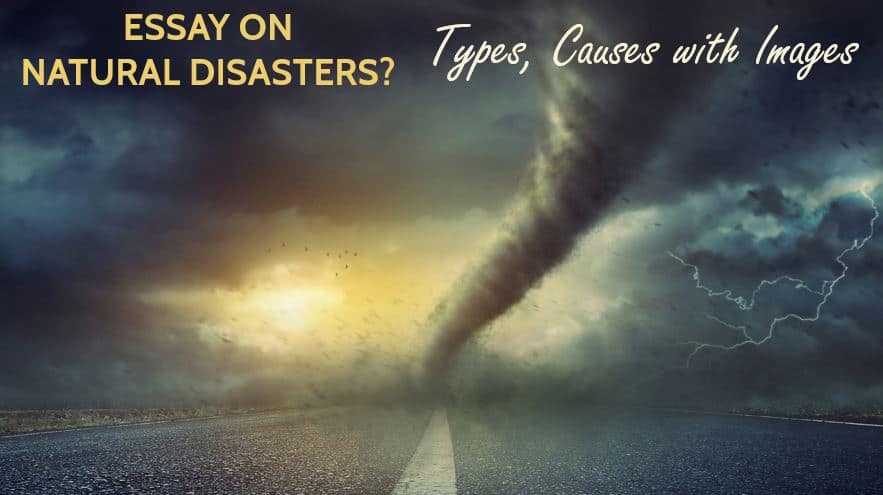In this article you will read an essay on natural disaster for students and children in 1500 words. It includes meaning, types, causes, images and political consequences of natural disasters.
Essay on Natural Disasters or Calamities (1500 Words)
This information on natural disaster is best for students of school and colleges. You can also use these paragraphs to make this essay small or long.
What are Natural Disasters?
The sudden and extreme events caused by environmental factors that injure people and damage property are known as Natural Disaster. Earthquakes, windstorms, floods, and disease all strike anywhere on earth, often all of a sudden.
An adverse event won’t rise to the extent of a disaster if it occurs in a neighbourhood without a vulnerable population.
During a sensitive area, however, the earthquake that took place in Nepal during the 2015 earthquake, which caused disastrous consequences, which will take many years to repair it.
Types of Natural Disasters with Images and Information About Calamities
Below we have provided all information about different type of types and subtypes of natural disasters:
1. Geological Disasters
a) Avalanches
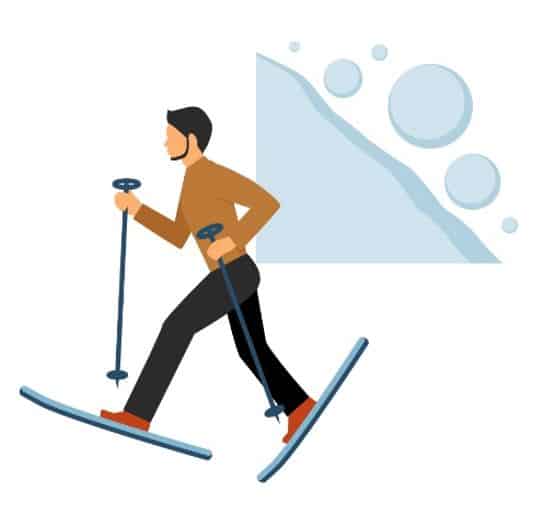
An outward and downward slope movement of an abundance of slope-forming materials, including rock, soil, or maybe a mixture of those things called avalanche.
An estimated 40,000 to 80,000 soldiers died in World War I as a result of avalanches during the mountain campaign within the Alps at the Austrian-Italian front.
Many of the avalanches were caused by cannon fire. Avalanche type natural calamity mainly occurs in mountain areas.
b) Earthquakes
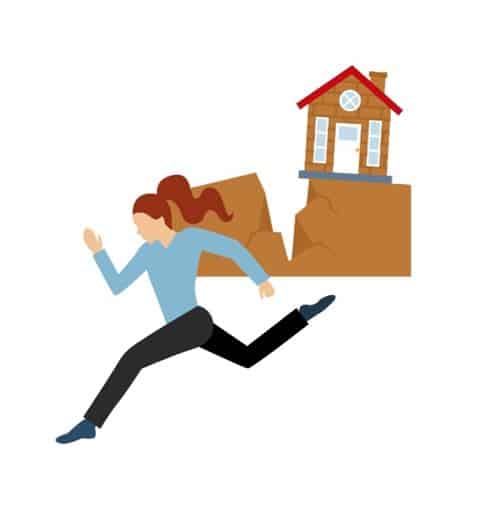
An earthquake is a form of natural disaster that is caused by a sudden release of energy within the crust that makes seismic waves.
At the surface, earthquakes manifest themselves by vibration, shaking, and sometimes displacement of the bottom. Earthquakes are caused by slippage within geological faults. The underground point of origin of the quake is named the seismic focus.
The purpose directly above the main target on the surface is called the epicenter. Earthquakes by themselves rarely kill people or wildlife.
It’s usually the secondary events that they trigger like building collapse, fires, tsunamis (seismic sea waves), and volcanoes. Many of those could be avoided by better construction, safety systems, early warning, and planning.
c) Sinkholes
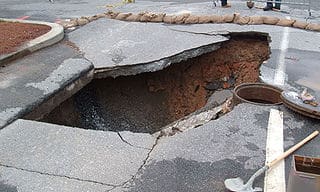
A form of a natural disaster which is caused due to natural erosion, human mining, or underground excavation makes the bottom earth too weak to support the structures built thereon, the base can collapse and produce a sinkhole.
For example, a sinkhole caused by heavy rain from Tropical Storm Agatha in Guatemala City in 2010, which killed fifteen people, diverted by leaking pipes into a pumice bedrock, led to a sudden collapse of the bottom beneath a factory building.
d) Volcanic Eruptions

Volcanoes can cause consequent disaster and widespread destruction in several ways. The falling of rocks or the explosion of the volcano is caused by the volcanic eruption.
Many buildings, plants, and animals are destroyed when the lava is produced during the outbreak of the volcano. The cooled ash, known as volcanic ash, forms a cloud and settles thickly in nearby locations.
When the volcanic ash mixed with water builds a concrete-like material, inadequate quantities, roofs may collapse under the volcanic ash weight. But even small amounts will harm humans if inhaled.
2. Hydrological Disasters
a) Floods

The overflowing of water that causes submerging of land caused a natural disaster, which is known as the flood. The EU Floods Directive defines a wave as a temporary covering the ground with water, which is typically not covered by water.
Within the sense of ‘flowing water,’ the word can also be applied to the inflow of the tides. Flooding may result from the quantity of water within a body of water, like a river or lake, which overflows, causing a number of the water to flee its usual boundaries.
While the dimensions of a lake or other body of water will vary with seasonal changes in precipitation and snowmelt, it’s only considered as a significant flood unless it covers a village, city, or another inhabited area by humans.
b) Tsunami
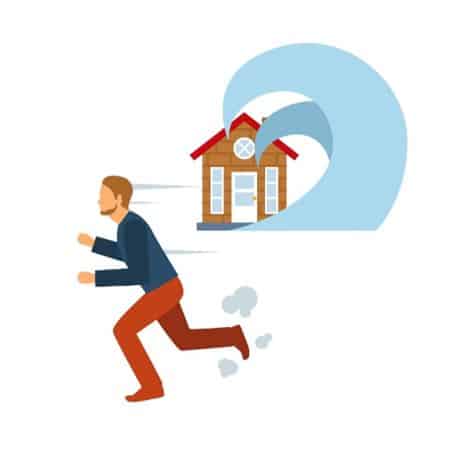
A tsunami is a Japanese word that is referred to as a seismic sea wave. There is a displacement of an outsized volume of water, which causes a series of waves in a water body. It generally happens in an ocean or an outsized lake. It is known as a tsunami.
Tsunamis are often caused by undersea earthquakes like the 2004 Boxing Day tsunami, or by landslides like the one in 1958 at Lituya Bay, Alaska, or by volcanic eruptions like the traditional eruption of Santorini.
Near Fukushima, Japan, on March 11, 2011, a tsunami occurred and spread through the Pacific.
3. Metrological Disasters
a) Cyclonic Storms

There is a different phenomenon known for storms formed over the oceans like a cyclone, tropical cyclone, hurricane, and typhoon. The determining factor on which term is employed is predicated on where they originate.
The term hurricane used in the Atlantic and Northeast Pacific, and the term typhoon is used within the Northwest Pacific, and term cyclones are used when it occurs in the South Pacific and the Indian Ocean.
The deadliest hurricane ever was the 1970 Bhola cyclone; the most dangerous Atlantic hurricane was the good Hurricane of 1780, which devastated Martinique, St. Eustatius and Barbados. Another notable storm is Hurricane Katrina, which devastated the Gulf Coast of us in 2005.
b) Blizzards
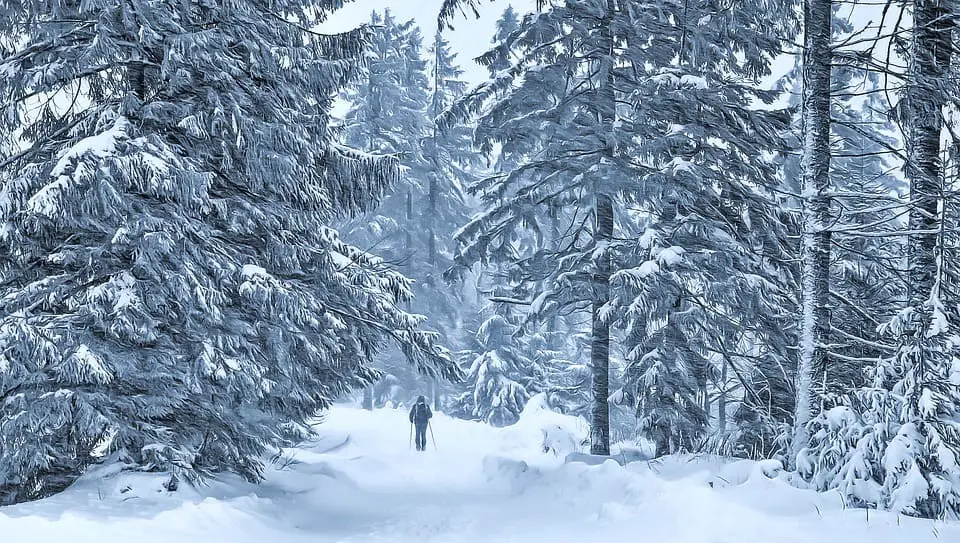
Blizzard is a form of natural disaster that is severe winter storms characterized by heavy snow and powerful winds.
When high winds fire up snow that has already fallen, it’s referred to as a ground blizzard. The local economic activities are impacted due to snowstorms, especially in regions where snowfall is rare.
The good Blizzard of 1888 affected us when many plenties of wheat crops were destroyed, and in Asia, the 2008 Afghanistan blizzard and, therefore, the 1972 Iran blizzard were also significant events.
The 1993 Superstorm originated within the Gulf of Mexico and traveled north, causing damage in 26 states also as Canada and resulting in quite 300 deaths.
c) Heat Waves
A wave may be a period of unusually and excessively weather. The worst wave in recent history was the ECU wave of 2003.
A summer wave caused massive bushfires in Victoria, Australia. Melbourne experienced three days during a row of temperatures exceeding 40 °C (104 °F) with some regional areas sweltering through much higher temperatures in 2009.
The bushfires collectively referred to as “Black Saturday,” were partly the act of arsonists. The 2010 hemisphere summer resulted in severe heat waves, which killed over 2,000 people.
It resulted in many wildfires that caused widespread pollution and burned thousands of square miles of forest.
d) Drought

Drought is that the unusual dryness of soil caused by levels of rainfall significantly below average over a protracted period. It is one of the most common natural disasters that is caused worldwide.
Hot, dry winds, shortage of water, high temperatures, and consequent evaporation of moisture from the bottom also can contribute to conditions of drought.
Droughts fail and scarcity of water. Well-known historical droughts include the 1997–2009 Millennium Drought in Australia led to a water system crisis across much of the country. Many desalination plants were built as a result of this.
e) Wildfires

Wildfires are large fires that frequently start in wildland areas. Common causes include lightning and drought, but wildfires can also be initiated by human negligence or arson.
They will spread to populated areas and may thus be a threat to humans and property, even as wildlife. Notable cases of wildfires were the 1871 Peshtigo Fire within us, which killed a minimum of 1700 people, and therefore the 2009 Victorian bushfires in Australia.
4. Space Disasters
a) Impact Events & airburst
Asteroids that impact the world have led to many major extinction events, including one which created the Chicxulub crater 64.9 million years ago and which is related to the demise of the dinosaurs.
Scientists estimate that the likelihood of death for a living human from a worldwide impact event is like the probability of dying from an airliner crash.
b) Solar Flare
A flare may be a phenomenon where the Sun suddenly releases an extraordinary amount of radiation, far more than usual. Solar flares can destroy electrical equipment rather than causing direct injury.
The potential of solar storms to create disaster was seen during the 1859 Carrington event, which disrupted the telegraph network and, therefore, the March 1989 geomagnetic storm, which blacked out Quebec.
Some major known solar flares include the X20 event on August 16, 1989, and an identical flare on April 2, 2001.
Political Consequences
Natural disasters also can affect political relations with countries, and the other way around Violent conflicts within states can exacerbate the impact of natural disasters by weakening the power of states, communities, and individuals to supply disaster relief.
Natural disasters also can worsen ongoing conflicts within states by reducing the capacity of states to fight rebels.
In developed countries, just like the US, studies find that incumbents lose votes when the electorate perceives them as liable for inadequate disaster response.
If you see Chinese and Japanese history, it’s been routine for era names or capital cities and palaces of emperors to be changed after a severe natural disaster, chiefly for political reasons like an association with hardships by the populace and fear of upheaval.
In East Asian government chronicles, such worries were recorded during a low-profile way as an unlucky name or place requiring change.)
Disasters and responses can dictate political careers, the once-popular President Benigno Aquino III of the Philippines, following a weak and confused response to Typhoon Yolanda.
It killed over 6,000 people, and survivors were left mainly to defend themselves. This widely accepted sentiment was carried over.
Therefore, the President never recovered his popularity; his handpicked successor Mar Roxas lost the next election to a rival party during a landslide vote.
Post-disaster mishandling can spread despair as bad news travels fast and much, and contribute to the appeal of electing a strongman out of sheer desperation.
I hope you liked this informational essay on natural disasters and calamities for students and children.
